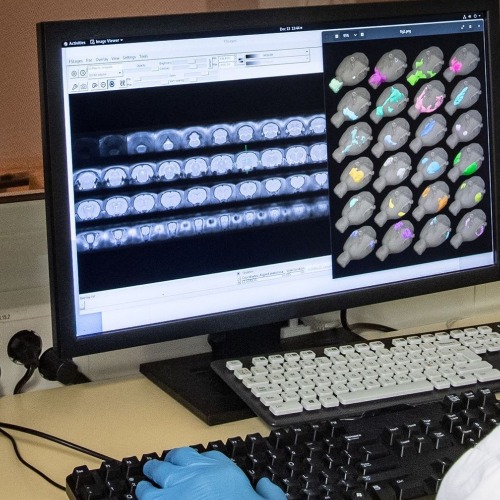Hyperpolarisation
MR signal can be amplified up to 100% signal levels (normal signal is around 0.01% even at highest used magnetic fields) using hyperpolarisation techniques. This signal boost can be used study real-time metabolism. Dissolution Dynamic Nuclear (Hyper)Polarisation (dDNP) has so far shown most promise in the translation to in vivo use.
The DNP technique is based on microwave-driven transfer of polarisation from free electrons to the target nuclei (e.g. 13C, 15N) at high magnetic field and low temperature (~1.4 K). During the experiment, the marker (usually a small molecular weight molecule, e.g. [1-13C]pyruvic acid) is mixed with a radical, and if necessary a glass forming agent (e.g. glycerol). It is then placed into a dedicated hyperpolariser system and exposed to microwaves for an expended period of time (e.g. 30min to 24h depending on the sample) to build up the signal. After build-up, the sample will be dissolved using a hot buffer yielding a sample that can be injected to in vitro or in vivo samples, or to a patient in clinical settings. The system is flexible in terms of the polarised molecules and also allows different nuclei (e.g. 13C, 29Si, 1H.
In UEF, we have a prototype SpinAligner system operating at 3.35T, 6.7T or 10T (https://polarize.dk/), developed in the Technical University of Denmark by Prof. Jan Henrik Ardenkjaer-Larsen (https://hypermag.dtu.dk/).




